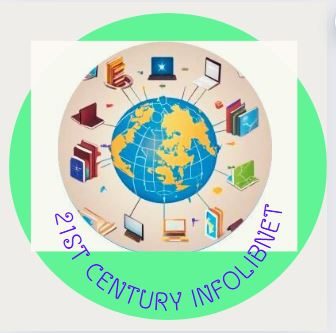Let’s embrace the joyful traditions and celebrations of this significant Christian holiday. It’s a time for family and community to come together in celebration. Let us reflect on the blessings of life and share love and kindness with all.
Wishing You and Your Family a Joyous Ethiopian Easter !!
Easter, known as “Fasika “, in Ethiopia, stands as one of the most important festivals for Christians. It marks a period of deep spiritual rejuvenation and happiness. Celebrating the resurrection of Jesus Christ, it is observed with diverse traditions and customs globally. This blog post will delve into various Easter traditions and celebrations.
Easter Traditions and Customs:
1. Cultural music and dancing: Easter in Ethiopia is not only a religious celebration but also a time to showcase the country’s cultural diversity and vibrancy [2]. Traditional music, dancing, and singing are part of the Easter festivities, reflecting the joy and celebration of Christ’s resurrection [2].
2. Egg Hunts: One of the most popular Easter traditions is the colorful egg hunt. Families and communities come together to hide and search for eggs, which are often filled with treats or small gifts. This activity brings joy and excitement to children and adults alike [1].
3. Decorating Eggs: Another cherished Easter tradition is decorating eggs. People use various techniques such as dyeing, painting, or using stickers to create beautiful and vibrant designs on eggs. These decorated eggs symbolize new life and rebirth [1].
4. Exchanging Gifts: Easter is also a time for exchanging gifts among family and friends. It is a way to show love and appreciation for one another. Common gifts include chocolates, flowers, and Easter-themed items [1].
5. Sweet Treats: Indulging in sweet treats is a delightful part of Easter celebrations. Chocolate bunnies, Easter-themed cookies, and other delicious desserts are enjoyed during this festive season [1].
Easter Celebrations Around the World:
1. Ethiopia:
In Ethiopia “Fasika” or Easter is a significant celebration for both the Orthodox Christians and Protestants. While there are some differences in the way they observe Easter, both groups come together to commemorate the resurrection of Jesus Christ. Let’s explore the Easter celebrations of the Orthodox Christians and Protestants Christians in Ethiopia:
Orthodox:
* Fasting: Orthodox Christians in Ethiopia observe a 55-day fast leading up to Easter. This fast, known as “Hudade” or “Abiy Tsom,” involves abstaining from meat and dairy products [2]. It is a time of spiritual reflection and preparation for the celebration of Christ’s resurrection.
* Easter Eve Service: On Easter Eve, Orthodox Christians attend lengthy church services that begin in the late evening and last until the early morning. Worshippers dress in traditional white clothing and participate in prayers, hymns, and readings from the Bible [1].
* Breaking the Fast: After the Easter Eve service, Orthodox Christians break their fast and celebrate the resurrection of Christ. They gather with family and friends for a festive meal, which often includes traditional Ethiopian dishes such as doro wat (spicy chicken stew) and injera (spongy flatbread) [2].
Protestants:
* Worship Services: Protestant churches in Ethiopia hold special Easter worship services to commemorate the resurrection of Jesus Christ. These services often include prayers, sermons, hymns, and joyful singing [2].
* Easter Programs: Protestant churches organize various programs and activities during the Easter season. These may include Easter plays, musical performances, and community outreach initiatives to share the message of Christ’s resurrection [2].
* Fellowship and Celebration: After the Easter worship service, Protestants gather for fellowship and celebration. They may have meals together, engage in joyful activities, and spend time with family and friends [2].
Catholics:
In Ethiopia, Catholic churches celebrate Easter in accordance with the calendar of the Ethiopian Coptic Orthodox Church [8]. The Catholic community in Ethiopia is relatively small, accounting for less than 2% of the population [8]. Here is an insight into the traditions, customs, and festivities of Easter (known as Fasika) celebrated by Catholic churches in Ethiopia:
1. Fasting: Orthodox Christians and Catholics in Ethiopia observe a traditional 55-day fast leading up to Easter Sunday [7]. This fast involves abstaining from all meat and animal products. Good Friday is spent in preparation for breaking the fast after a morning church service [7].
2. Lenten Fast: Catholics in Ethiopia observe a period of fasting called “Hudade” or “Abye Tsome” during Lent [8]. This fast lasts for 55 days and includes abstaining from meat and dairy products. The diet during this period mainly consists of vegetables, cereals, lentils, peas, fruit, and vegetable stew accompanied by injera (a traditional Ethiopian bread) [8].
3. Easter Vigil: On the night of Easter Saturday, the faithful gather in the church for a celebration that starts at 6 pm and ends at 2 am [8]. This Easter vigil is a significant part of the Easter celebration in Ethiopia.
4. Breaking the Fast: After the Easter vigil, the faithful break their fast with a meal that typically includes chicken or lamb [2]. The meat is slaughtered the night before Easter Sunday, and the meal is consumed after 6 pm [8].
5. Interfaith Initiatives: In Ethiopia, there is good cooperation and solidarity between religious communities, including Muslims and Christians [8]. The Interfaith Council of Addis Ababa, in collaboration with the municipal administration, organizes solidarity activities for people of all faiths, including followers of traditional religions [8].
2. Sweden and Finland:
In Sweden and parts of Finland, children dress up as witches on the Thursday before Easter. They go door-to-door, exchanging handmade Easter cards and drawings for candy. They also receive large Easter eggs filled with homemade chocolates from their parents [3].
3. Norway:
Norwegians have a unique Easter tradition of reading crime novels and watching murder-mystery shows during the week-long holiday. Publishers release new thrillers, and television channels add crime dramas to their schedules. Dairy companies even print crime-related stories on their milk cartons [3].
4. Corfu, Greece:
On Holy Saturday, the residents of Corfu toss water-filled clay jugs called “botides” onto the streets. This tradition, inspired by the Italians, symbolizes a fresh start and welcomes the arrival of spring [3].
5. Florence, Italy:
In Florence, on Easter Sunday, hundreds of Italians dress up in 15th-century clothing and escort a 30-foot-tall antique cart filled with fireworks to the Florence Cathedral. The archbishop of Florence lights a fuse attached to the cart, creating a colorful display known as the “Scoppio del Carro” or the “Explosion of the Cart.” This tradition is believed to ensure a good harvest in the upcoming year [3].
Conclusion:
Let’s embrace the joyful traditions and celebrations of this significant Christian holiday. It’s a time for family and community to come together in celebration. Let us reflect on the blessings of life and share love and kindness with all.
Read More:
- Easter 2024: Significance, Traditions And All You Need To Know
- An Insight into the Traditions, Customs and Festivities of Fasika – Ethiopiaid UK
- Easter Celebrations And Traditions From Around The World
- Easter 2024: Easter 2024: History, date, significance and ways to celebrate the Christian festival – The Economic Times
- Easter in Ethiopia – Mossy Foot Project
- Ethiopia’s Belated Easter Celebration – Top 10 Things You Didn’t Know About Easter – TIME
- An Insight into the Traditions, Customs and Festivities of Fasika
- Easter in Ethiopia: Hoping for peace and rebirth – Vatican News
- Catholics in Ethiopia hope for lasting peace during their upcoming Easter – Catholic news – La Croix International
SHARING IS CARING! Please Share Clicking On The below Social Network Buttons





















You must be logged in to post a comment.